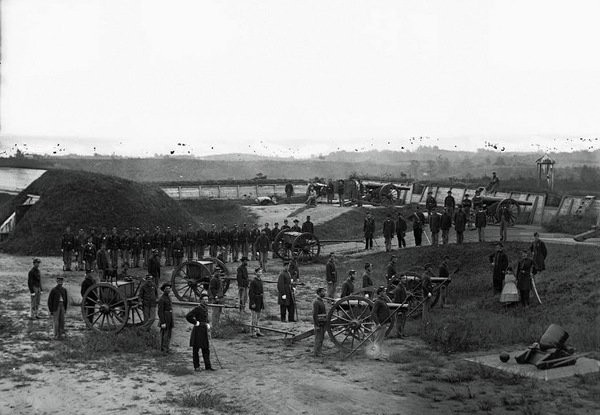Fort Ethan Allen, Arlington VA
Introduction
Text-to-speech Audio
Images
An overgrown portion of the remains of Fort Ethan Allen ((By Farragutful (Own work) [CC BY-SA 3.0 (http://creativecommons.org/licenses/by-sa/3.0)], via Wikimedia Commons))
![An overgrown portion of the remains of Fort Ethan Allen ((By Farragutful (Own work) [CC BY-SA 3.0 (http://creativecommons.org/licenses/by-sa/3.0)], via Wikimedia Commons))](https://storage.googleapis.com/clio-images/medium_25319.55587.jpg)
The fort held about three dozen guns and could garrison as many as one thousand troops.

Backstory and Context
Text-to-speech Audio
In May of 1861, during the American Civil War, Federal troops took control of Arlington Heights. Initially, work was conducted on Forts Runyun, Corcoran, Albany, and Scott in order to try to bolster their defense of Washington, DC. Fort building increased after the Federal army was defeated at Bull Run in July of 1861, and work began on Forts Richardson and Ethan Allen, as well as a line of defense called the Arlington Line. For all the preparation that went into the fortifications, the Arlington Line was never attacked, along with Forts Ethan Allen and Richardson. Perhaps the only wartime action the Fort saw was a visit by President Abraham Lincoln.
Fort Ethan Allen remained where it was built, and as it was merely an earthen fort, it was subject to natural erosion. The land was left to itself, and in time, it was converted into the Fort Ethan Allen Park. After decades, the fort had largely degraded, and only a few portions of the fort remain, grown over by the local flora. On December 3rd, 2003, it was designated on the Virginia Landmark Register, and on February 11th, 2004, it was added to the National Register of Historic Places.
